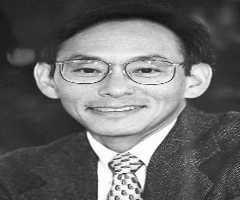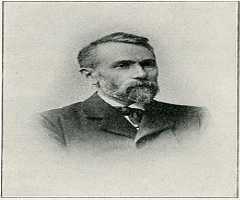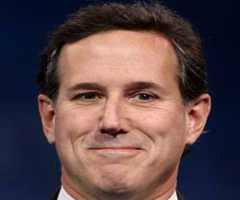Abraham Pais Biography, Life, Interesting Facts

Birthday :
Died On :
Birth Place :
Zodiac Sign :
Childhood And Early Life
Physicist Abraham Pais was born in Amsterdam in the Netherlands to Jewish parents Jesaja Pais and Kaatje van Kleeff on the 19 May 1918. His parents were both school teachers, and he had one sibling, Annie. He was a gifted child who did well academically and had a happy childhood.
Education
Abraham Pais was awarded a B.Sc. in mathematics and physics from the University of Amsterdam (1938). He then did an M.Sc. at the University of Utrecht (1940) where he worked under theoretical physicist George Uhlenbeck. In 1941 he was awarded his Ph.D. in physics.His doctoral advisors were Leon Rosenfeld and George Uhlenbeck.
Rise To Stardom
After receiving his doctorate in 1941 Pais held various teaching jobs until March 1943 when Abraham Pais was forced to go into hiding. The Nazis had begun to depart Dutch Jews to the concentration camps, and Pais spent time hiding in attics to avoid detection. The Gestapo arrested him in 1945. Pais’s sister Annie died in the camps, but he survived, along with his parents.
Academic Career
When World War II was over Pais worked initially in Copenhagen, Denmark at what is today the Niels Bohr Institute. Abraham Pais then, in 1947, he moved to America where he worked under J. Robert Oppenheimer at Princeton University in New Jersey at the Institute for Advanced Study.
In 1947 Pais was one of the scientists selected to attend the Shelter Island conference. The focus of the meeting was to brainstorm ideas to restore confidence in theoretical physics which was struggling after the development of the atomic bomb. The scientists were asked for input into what direction future research should take. Other scientists who attended included Albert Einstein, Linus Pauling, J. Robert Oppenheimer and Edward Teller. The conference is seen as a starting point for the postwar advances in quantum field theory and investigation into fundamental particles that existed at the time of the Big Bang theory of the origin of the universe.
Abraham Pais was made a professor at Princeton University in 1951, working alongside with Albert Einstein. He stayed at Princeton until 1963 when he joined Rockefeller University in New York City. It was during his time at Rockefeller University that he began documenting the history of theoretical physics and publishing biographies of eminent scientists in the field.
Abraham Pais remained at Rockefeller University until his retirement in 1988. He divided his final years between Copenhagen in Denmark and the United States
Author
Abraham Pais published his autobiography A Tale of Two Continents: A Physicist's Life in A Turbulent World (1997). Then in 1892, he released Subtle Is the Lord: The Science and the Life of Albert Einstein. This book won critical acclaim and is considered a classic among scientists. He was working on a biography of J. Robert Oppenheimer at the time of his death, and this was published posthumously by Oxford University Press in 2006. Other books include Inward Bound: Of Matter and Forces in the Physical World (1986) and The Genius of Science: A Portrait Gallery (2000).
Awards And Achievements
Abraham Pais won the Robert Oppenheimer Memorial Prize in 1976 for his research into particle physics. Other prizes include the Physics Prize of the Dutch Physical Society (1992), Medal of the Science of the Royal Dutch Academy of Sciences (1993), the German Award of the American Physical Society (1994) and the Lewis Thomas Prize (1995).
Personal Life
Abraham Pais was married three times. His first wife was a poet, Lila Lee Atwill, whom he married in 1956. The couple had one child, a son Joshua (b.1958) before they divorced in 1961. He was married a second time between 1976 until 1985. Then in 1990, he married Ida Nicolaisen, a Danish professor and academic. They remained together until his death.
Abraham Pais died on the 29 July 2000 in Copenhagen, Denmark.
Legacy
Abraham Pais was a theoretical physicist as well as a writer who chronicled the science of theoretical physics in his time as well as the lives of the gifted scientists involved.
More Physicists
-
![John Hasbrouck Van Vleck]()
John Hasbrouck Van Vleck
-
![Hans Bethe]()
Hans Bethe
-
![Werner Heisenberg]()
Werner Heisenberg
-
![Steven Chu]()
Steven Chu
-
![Mihajlo Idvorski Pupin]()
Mihajlo Idvorski Pupin
-
![Theodore H. Maiman]()
Theodore H. Maiman
More People From Netherlands
-
![Johannes Diderik van der Waals]()
Johannes Diderik van der Waals
-
![Jan Hendrik Oort]()
Jan Hendrik Oort
-
![Martinus J. G. Veltman]()
Martinus J. G. Veltman
-
![Lawrence Alma-Tadema]()
Lawrence Alma-Tadema
-
![Paul J. Crutzen]()
Paul J. Crutzen
-
![Nikkie De Jager]()
Nikkie De Jager

















